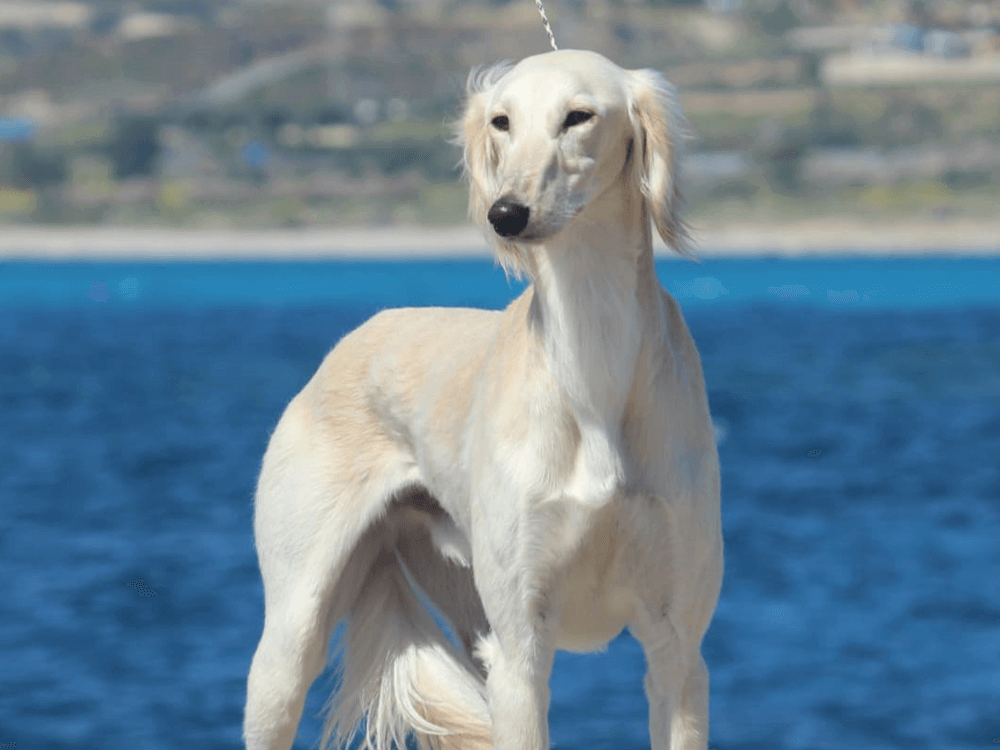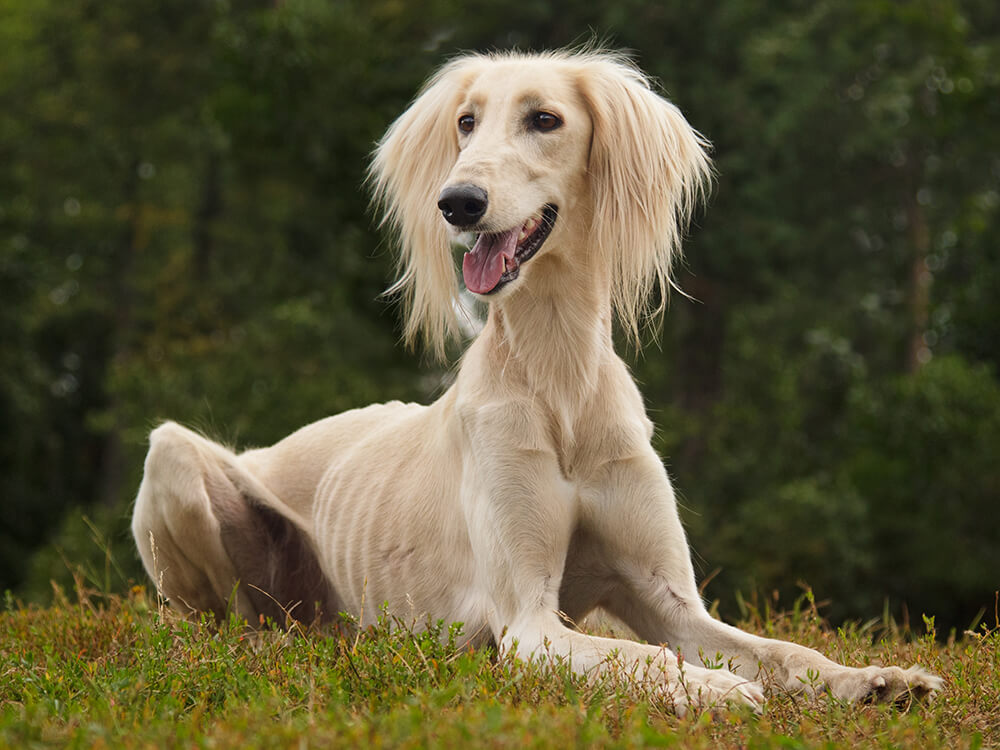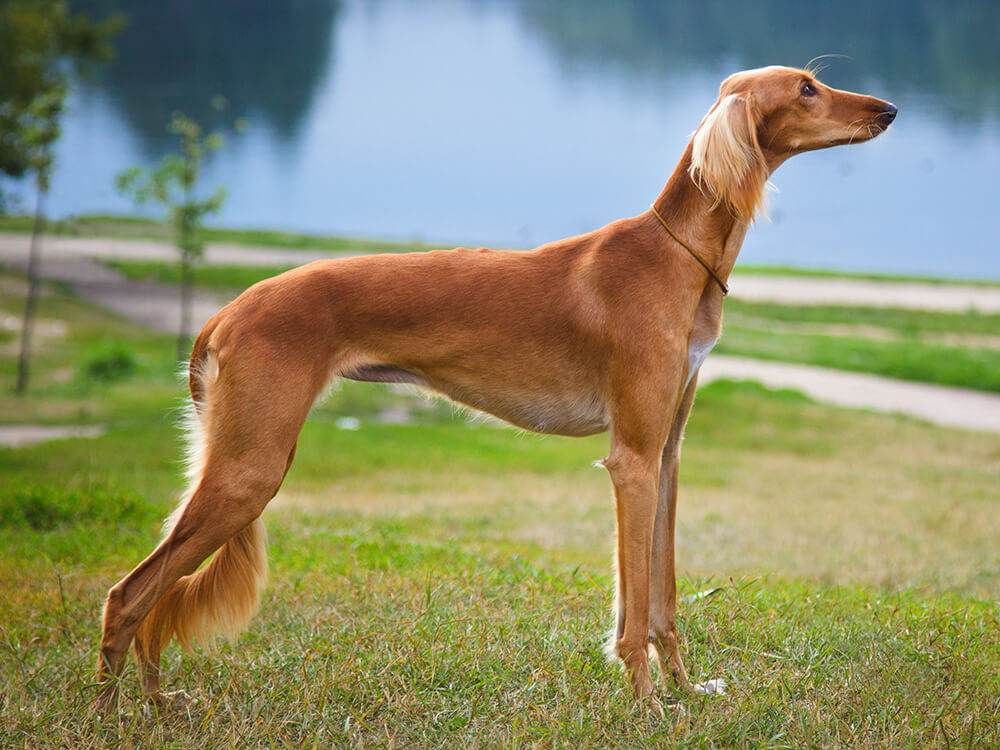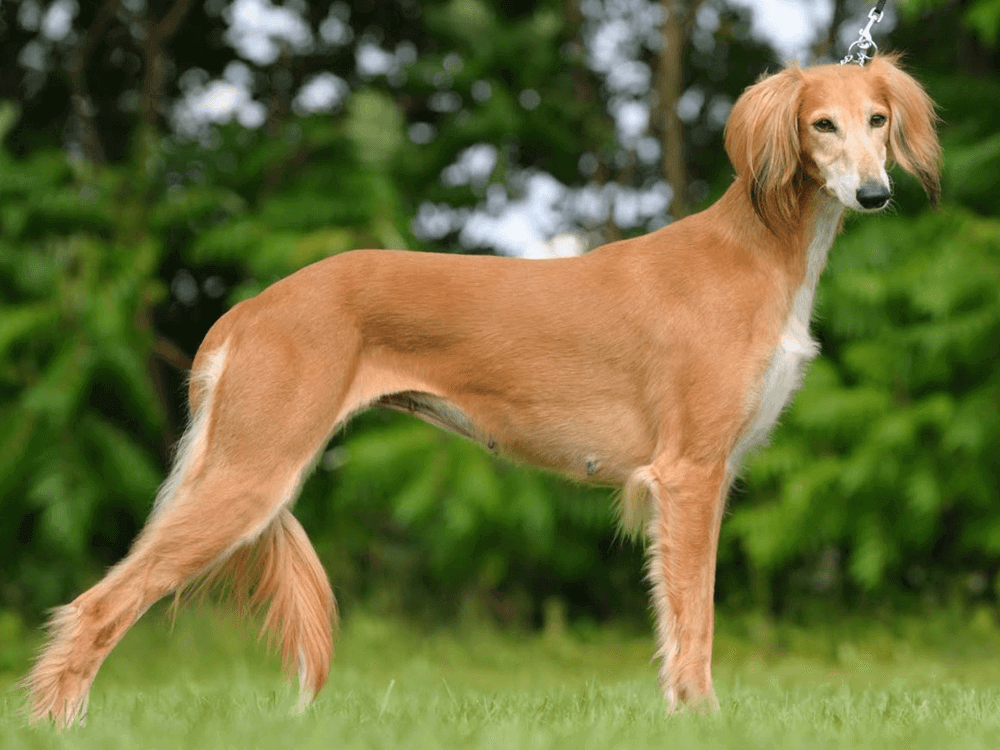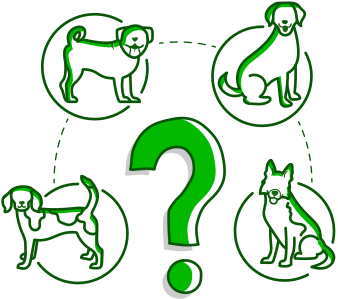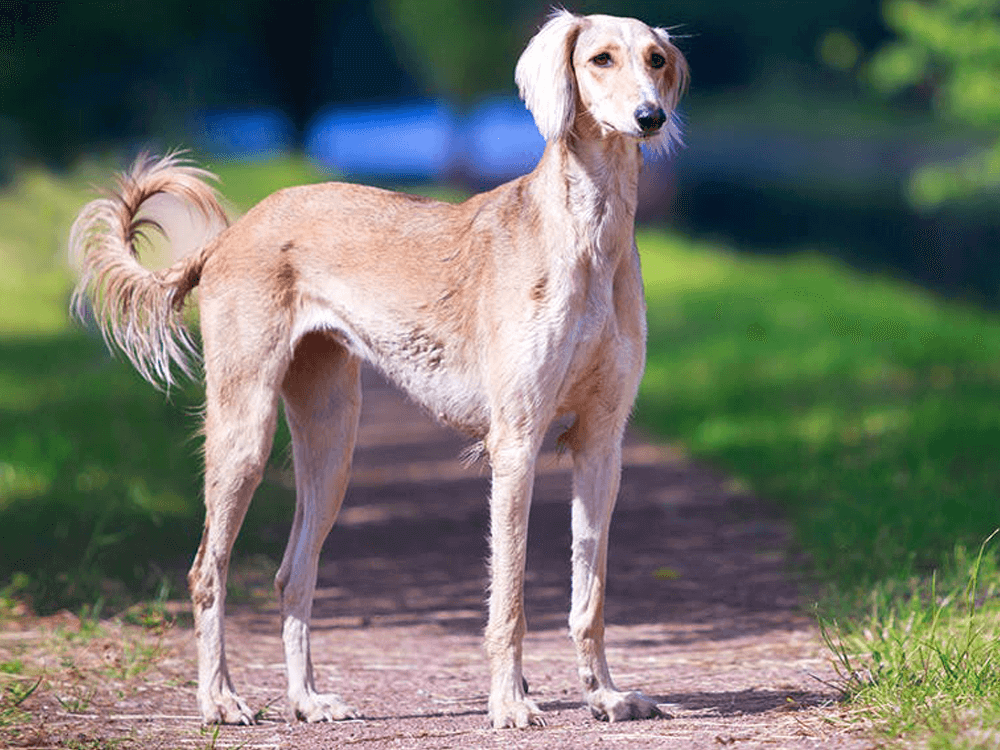
Saluki Breed Pictures
Vital Breed Stats
| Height: | 58 - 71 cm M | 58 - 71 cm F |
| Weight: | 13 - 30 kg M | 13 - 30 kg F |
| Breed Group: | Toy Dog Group |
| Life Expectancy: | 11 - 14 years |
| KC Registered: | No |
Breed Characteristics
| Size: |  |
| Grooming: |  |
| Exercise Level: |  |
| Trainability: |  |
| Barking Level: |  |
| Good with Children: |  |
| Good with other pets: |  |
| Affectionate: |  |
| Protective: |  |
| Cost to Keep: |  |
Give a thumbs up if you love the Saluki

0
More About the Breed
History
The history of the Saluki is shrouded in mystery but DNA analysis confirms that the Saluki has canine genomes of an ancient hound found in the Middle East. Images of dogs resembling the Saluki are found in archaeological sites, and in Egypt, it is said to be mummified after its death. Poets extoll Salukis for their grace and swiftness. These were hunting dogs ranked above lowly dogs and were highly-valued as fine horses or falcons.
The Saluki was first introduced to Europe around the 12th century. In 1840, Salukis found their way to England. However, the breed was not popular until the early 1920s when war officers brought pet Salukis when they returned from the Arab Revolt in the Middle East. In 1923, the first breed club was established, and The Kennel Club recognised the breed that same year.
Appearance
The appearance of the Saluki gives the impression of grace, elegance and athleticism. Its form is built for speed and endurance. The Saluki is a medium-size dog that should have an average weight of 35 to 70 pounds and 58 to 71 centimetres. However, females are considerably smaller. Salukis have large heads that are long and narrow, well-defined stops, black noses, and eyes that are moderately large with a dignified expression. They have ears that lie close to their cheeks, necks that are long and nicely arched, sloping shoulders and long straight front legs. The Saluki’s tail is set high when moving or alert.
The breed has two coat types: rough and smooth. Rough-coated Salukis have thick coats that lie close to the body and thicker hair on their necks, thighs and tails. On the other hand, Smooth-coated Salukis have closer, hound-like coats with only a slight feathering on their thighs and tails. Regardless of coat types, the Saluki can wear coat colours of white, fawn, cream, grizzle and tan, black and tan, golden and tricolour (white, tan, and black).
Grooming
Temperament
The Saluki is devoted to its family but aloof toward strangers. This dog breed is gentle and thrives on human companionship. It forms strong bonds, which is why it is may suffer from separation anxiety. Salukis like to keep their distance from new people and as such are not natural watchdogs. It also does not help that these dogs are not barkers, like most sighthounds, since they hunt prey with stealth. However, the wariness can be corrected, and they can be taught to bark when the dog is socialised and trained at an early age.
Salukis are not the ideal choice for novice dog owners. These dogs need a steady handler that is familiar with the specific needs of an extremely agile and sensitive dog.
Intelligence
When it comes to being a family companion, the Saluki is a friendly, affectionate and devoted breed. It is also known to enjoy being around children. However, it is not suitable for homes with toddlers since it is a bit high-strung and can easily knock down small children. Any interaction must be well-supervised to avoid accidents.
Salukis generally get along well with other dogs since they were originally bred to hunt in packs or with other sighthounds. However, their high prey drive prevents them from being relaxed around smaller animals. Care should be taken when a Saluki is around small pets, including cats, because it will think nothing of chasing the small animals as fair game.
Nutrition
Several considerations go into pursuing a balanced diet the Saluki deserves, so it is best to seek advice from a vet or a canine nutritionist.
For starters, below are typical calorie needs of an adult Saluki that weighs 50 pounds.
- Senior and less active: up to 1,170 calories daily
- Typical adults: up to 1,310 calories daily
- Physically active/working dogs: up to 1,460 calories daily
Feeding
Health
Exercise
Cost of Ownership
It is important to learn what pet expenses to expect before bringing a dog into the family. Do remember that the cost to own a dog is more than just the expense of food. When you decide to buy a Saluki puppy, make sure you have enough money to care for it throughout its lifespan. If you choose to purchase a purebred, you can expect to spend £400 to £600, give or take.
Also consider buying pet insurance for your dog, which will cover a part of the vet expenses. The cost for pet insurance will depend on the provider, your location, the dog’s age and current health. T give you a rough estimate, a 3-year old Saluki with no prior medical history will cost around £20 a month for a basic cover and £45 for a lifetime cover. High quality dog food is a big part of taking care of a healthy dog. The typical cost of dog food is somewhere from £40 to £50 a month.
Routine veterinary care is also crucial to keep your dog healthy. Going for wellness checks, including basic vet procedures (e.g. vaccinations, boosters, neutering) will cost at the least £1,000 a year. Overall, you should budget about £70 to £100 per month. However, the amount is merely an estimate. As a responsible future dog owner, make sure to do your own research.
Saluki Breed Highlights
- The Saluki is an elegant sighthound with a strong instinct to hunt.
- It is an affectionate and devoted family companion.
- It is low maintenance, grooming-wise, and only requires weekly brushing.
- Salukis give the impression of grace, elegance and athleticism.
- They like to keep their distance from strangers and as such, are not natural watchdogs.







